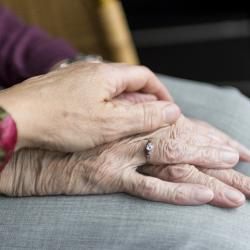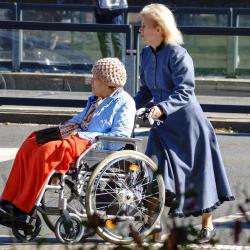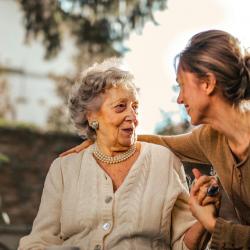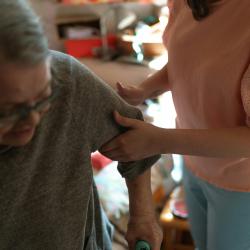The Role of Family Caregivers in Aging in Place
The concept of "aging in place" has gained significant traction as more seniors express a preference to remain in their homes and communities as they age, rather than moving into institutional care settings. This trend reflects a broader shift towards personalized, community-based models of care that emphasize autonomy, familiarity, and comfort. At the heart of this movement are family caregivers, whose role is both invaluable and multifaceted, influencing not only the well-being of the elderly but also the fabric of our aging society.
Understanding Aging in Place
Aging in place is the ability to live in one's own home and community safely, independently, and comfortably, regardless of age, income, or ability level. This approach to aging is preferred by the vast majority of older adults due to its potential to provide a sense of continuity and control. It allows seniors to maintain their routines, stay connected with their social networks, and continue engaging with their communities, all of which are crucial for their emotional and mental health.
The Integral Role of Family Caregivers
Family caregivers are often the unseen foundation of the aging-in-place model, providing practical, emotional, and sometimes financial support to their elderly loved ones. These caregivers, who may be spouses, children, or other relatives, take on a variety of tasks to assist with day-to-day living. Their responsibilities can include managing medications, coordinating healthcare appointments, assisting with personal care, and helping with household chores. As such, caregivers ensure that seniors can stay in their homes for as long as possible.
One of the most significant roles family caregivers play is in the emotional support they provide. As individuals age, the challenges of declining health, reduced mobility, and the loss of lifelong friends can lead to feelings of isolation and depression. Family caregivers offer companionship, encouragement, and a connection to the outside world, which can significantly enhance the quality of life for aging adults.
Challenges and Support for Caregivers
Despite the rewarding nature of their work, family caregivers often face significant challenges. The demands of caregiving can lead to physical, emotional, and financial stress, compounded by a lack of formal training and support. Many caregivers also juggle other responsibilities, such as employment and raising children, which can lead to burnout.
To mitigate these challenges, it's crucial to create a supportive environment for caregivers. This can include access to respite care services, where temporary relief is provided to caregivers, as well as educational resources and training to help them acquire necessary caregiving skills. Additionally, community-based programs and support groups can offer caregivers the emotional and social support they need.
The Broader Implications
The contribution of family caregivers to aging in place has broader implications for society. By enabling seniors to remain at home, caregivers help reduce the demand on institutional care facilities, which can be costly and overburdened. Moreover, keeping older adults integrated into the community promotes diversity in neighborhoods and enhances intergenerational connectivity, fostering societal cohesion.
Conclusion
Family caregivers are the lifeblood of the aging-in-place movement, ensuring that seniors receive the care and support necessary to live dignified, independent lives in their own homes. Recognizing and supporting the critical role they play is essential as our society continues to age. Policymakers, healthcare providers, and communities must collaborate to create systems that not only empower seniors but also arm caregivers with the tools and resources they need to thrive in their roles. By doing so, we can build a more compassionate and resilient society that honors the wishes and needs of our aging population.






















